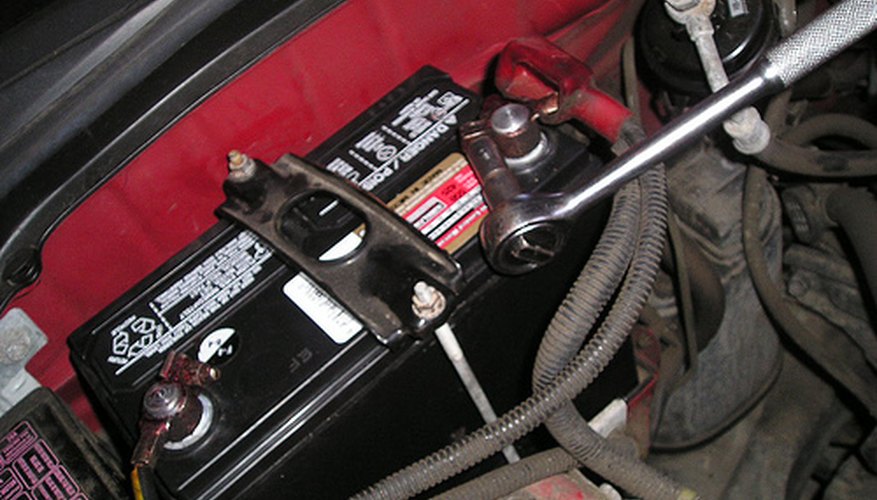If your check engine light comes on in your car, the first thing to come to mind is whether there is a repair needed or if the light was triggered by a faulty result. Many people like to reset the check engine light to see if the car's on-board computer triggers the same alert. A popular method of resetting the check engine light, although not necessarily recommended, is to disconnect the car battery to remove the power source to the car's central computer.
- If your check engine light comes on in your car, the first thing to come to mind is whether there is a repair needed or if the light was triggered by a faulty result.
Open the bonnet of the car and locate the battery. In many cars the battery is in plain view as soon as you open the bonnet. If this is not the case, refer to the owner's manual of your vehicle to identify the battery location. Some cars store the battery under the back seat or in a special compartment in the front bumper. The owner's manual will identify the battery location and provide instructions for how to gain access.
Disconnect the negative battery cable using a `1.8 cm (3/4 inch) spanner to loosen the battery cable. The negative battery cable is the one that has black insulation on the wiring. Sometimes it is connected directly to the negative battery post, but some cars attach it directly to the car body. Disconnect the cable and position it so that the end of the cable is not touching any grounded metal.
- Disconnect the negative battery cable using a `1.8 cm (3/4 inch) spanner to loosen the battery cable.
- Sometimes it is connected directly to the negative battery post, but some cars attach it directly to the car body.
Use a 1.8 cm (3/4 inch) spanner to disconnect the positive battery cable. This is the cable with red insulation, connected to the positive battery post. Loosen the nut and remove the cable from the battery post. Position the cable so that the end is touching no part of the car body. You have never taken away the power supply to the central computer, although some electricity is still stored in the car's capacitor.
Drain the remaining electricity from the battery. Even though the battery has been disconnected, there will still be a small amount of electricity that is stored in the engine. The easiest way to drain the electricity is to hold down on either the brakes or the car horn until there is no power left. This will deplete all electrical components of having power, including the car's central computer.
Wait 10 to 15 minutes for the memory banks to clear. Many cars have a safety feature built into the computer where the memory will remain unaltered for a period of time after being cut off from a power supply.
Use the 1.8 cm (3/4 inch) spanner to replace the positive and negative battery cables in the opposite order that they were disconnected (positive first, then negative). Once both cables have been connected, start the engine of the car to begin supplying power to all of the electrical components again, including the on-board computer.
- Drain the remaining electricity from the battery.
- Once both cables have been connected, start the engine of the car to begin supplying power to all of the electrical components again, including the on-board computer.
TIP
It is not typically recommended to reset your computer in this manner. If you are resetting the computer due to a check engine light, you will get better results by using an OBD II scanner. This scanner will tell you precisely what is causing the error, and will allow you to delete the error code from the computer's memory, effectively turning the light off. Most car parts shops have an OBD II scanner that you can use for free.
WARNING
A sudden loss of power may trigger a failsafe mode in items such as theft deterrent stereos or the car's Anti-Theft System (ATS). As a precaution, make sure you have the proper reset codes before depleting the car's stored electricity.
